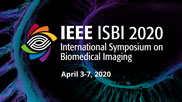Collection:

Medical image segmentation is one of the most important pre-processing steps in computer-aided diagnosis, but it is a challenging task because of the complex background and fuzzy boundary. To tackle these issues, we propose a double U-shape-based architecture named WNet, which is capable of capturing exact positions as well as sharpening their boundary. We first build an atlas-guided segmentation network (AGSN) to obtain a position-aware segmentation map by incorporating prior knowledge on human anatomy. We further devise a boundary-enhanced refinement network (BERN) to yield a clear boundary by hybridizing a Multi-scale Structure Similarity (MS-SSIM) loss function and making full use of refinement at training and inference in an end-to-end way. Experimental results show that the proposed WNet can accurately capture an organ with sharpened details and hence improves the performance on two datasets compared to the previous state-of-the-arts. Index Terms?Probabilistic atlas, Atlas-guided segmentation network, Boundary-enhanced refinement network.
- IEEE MemberUS $11.00
- Society MemberUS $0.00
- IEEE Student MemberUS $11.00
- Non-IEEE MemberUS $15.00
Videos in this product
Wnet: An End-To-End Atlas-Guided and Boundary-Enhanced Network for Medical Image Segmentation
Medical image segmentation is one of the most important pre-processing steps in computer-aided diagnosis, but it is a challenging task because of the complex background and fuzzy boundary. To tackle these issues, we propose a double U-shape-based architecture named WNet, which is capable of capturing exact positions as well as sharpening their boundary. We first build an atlas-guided segmentation network (AGSN) to obtain a position-aware segmentation map by incorporating prior knowledge on human anatomy. We further devise a boundary-enhanced refinement network (BERN) to yield a clear boundary by hybridizing a Multi-scale Structure Similarity (MS-SSIM) loss function and making full use of refinement at training and inference in an end-to-end way. Experimental results show that the proposed WNet can accurately capture an organ with sharpened details and hence improves the performance on two datasets compared to the previous state-of-the-arts. Index Terms?Probabilistic atlas, Atlas-guided segmentation network, Boundary-enhanced refinement network.
 Cart
Cart Create Account
Create Account Sign In
Sign In
